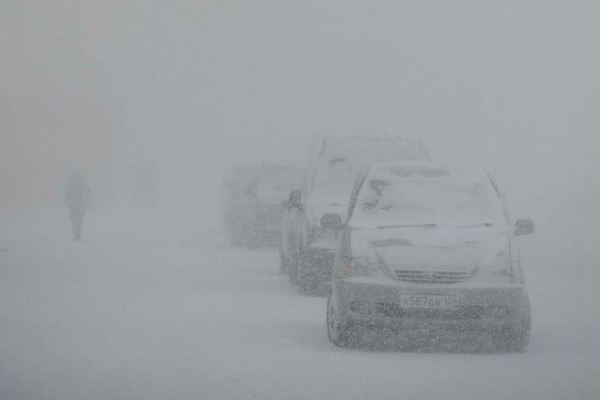The scientists of SFU have begun to carry out research and development work to reduce snow drifts of the Norilsk-Alykel highway. The corresponding agreement between the municipality and the leading Siberian university was signed in July.
The Wind Road project involves the creation of a wind structures system that will significantly reduce drifts on the road leading to the airport. For this, the experts will have to identify the most problematic sections of the Norilsk-Alykel road, where the probability of snow drifts is the highest. After examining the surrounding area and the relief of those areas, establishing the preferred direction and strength of the wind, snow load, the scientists will determine the most promising snow guide structures among those that are used today both in our country and around the world.
“Norilsk is characterized by high wind speed and snowy winters. Snowfall in Norilsk and its environs is turning into a real disaster that can paralyze the work of transport and enterprises. Of course, this causes significant economic damage, creates a lot of difficulties for local residents”, notes the head of the Wind Road project, the head of the Comprehensive Arctic Studies Department of the Siberian Federal University, Ph.D. in Economics and the head of the project direction of the North and Arctic Institute, Yury Zaharinsky. “Based on the results of numerical and physical modeling, we will formulate requirements for structures and materials that will provide mechanical strength in conditions of high wind loads at extremely low temperatures”.
As the project manager explained, employees of five institutes of the Siberian Federal University (ecology and geography, engineering and construction, oil and gas, mining, geology and geotechnology, physics and radio electronics) will work on the task. It will take a year and a half to carry out the necessary research and prepare an expert opinion.
But why did it become necessary to revise the traditional methods of snow fighting, proposed and used in Norilsk for more than half a century?
“The climate in the Arctic zone has changed significantly over the past 50 years. Due to the fact that the wind rose, as well as the wind strength, has undergone significant changes in the Norilsk region, the snow protection devices, which were installed in the 1940s, do not cope with their task. That is quite understandable – the places of their installation and the technical characteristics were calculated for other conditions”, says Ruslan Sharafutdinov, the responsible executor of the project, candidate of geographical sciences and director of the Ecology and Geography Institute.
Scientists need to look anew at the seemingly solved problem. As the experts themselves note, coping with snow drifts in the 21st century can be much more efficient.
“Today scientists have a powerful tool for studying aerodynamics – computational continuum mechanics, which is widely used to optimize the aerodynamic characteristics of various structures, buildings and structures. Within the framework of the Wind Road project, a detailed mathematical model of the snow drifts sections formation on the Norilsk – Kayerkan – Alykel highway will be developed using computational aerodynamics methods. With the help of this mathematical model, it will be possible to approach the solution of this problem at a new level. As a result of computational studies, the most effective wind and snow-retaining structures will be developed”, notes Andrey Minakov, the project executive, PhD in physics and mathematics and deputy Director for Science of the Oil and Gas Institute.
“The designers are faced with the task of developing products which will ensure the safety of the road at least until 2050. In this formulation, the problem is solved for the first time and has no analogues in the world. Therefore, each decision before its implementation will undergo a complex of tests in order to gain knowledge about critical impacts”, says the project executive, doctor of technical sciences and deputy director for research of the Civil Engineering Institute Sergey Amelchugov.
As Yury Zaharinsky emphasized, the problem of combating snow drifts is relevant not only for Norilsk, but also for other northern territories, the Arctic regions of Russia. There are similar difficulties in Scandinavia, Alaska and Canada.
“We will propose a set of measures to ensure the protection of the road sections”, said the head of the Wind Road project. “Scientists, specialists, road builders of the northern regions of Russia follow our work and wish the Siberian Federal University a positive result”.
Text: Victor Tsaryov, Photo: Nikolay Shchipko and open sources






